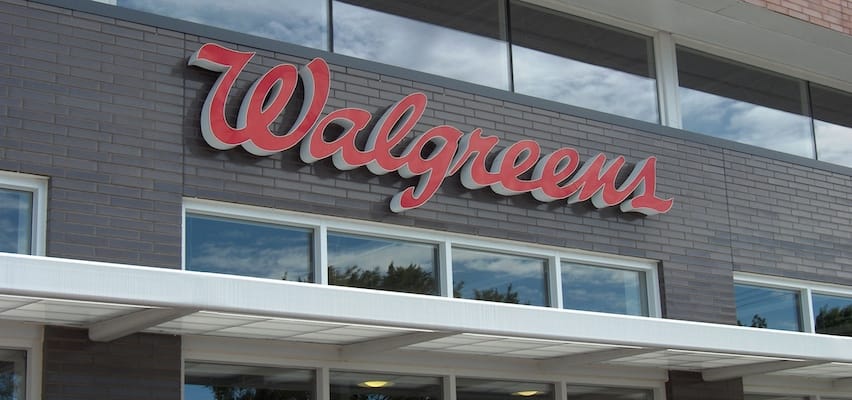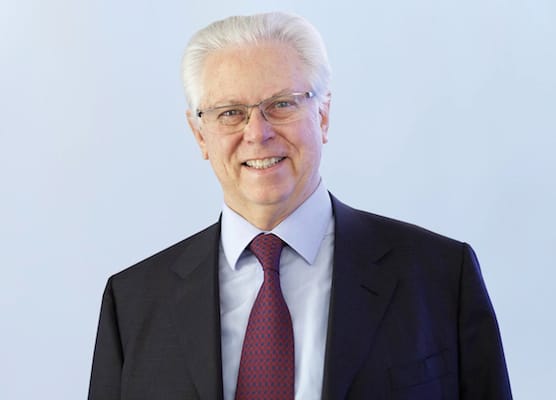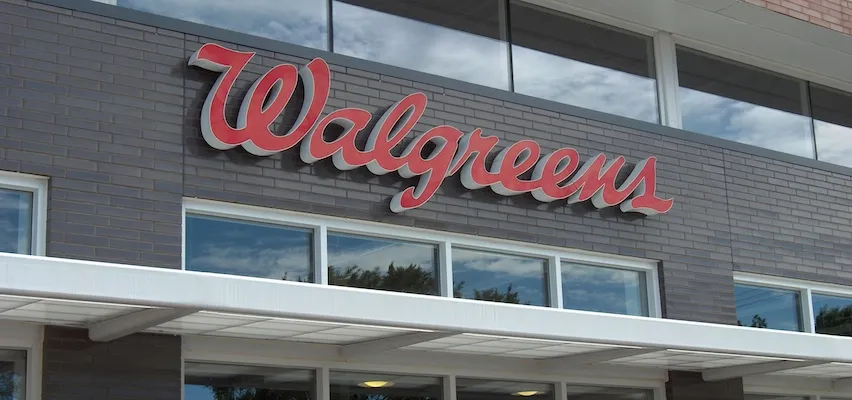
DEERFIELD, Ill. — Strong sales gains by the U.S. retail pharmacy division propelled Walgreens Boots Alliance (WBA) in its fiscal 2018 first quarter, which also saw the company exceed Wall Street’s earnings forecast.
WBA said Thursday that, for the quarter ended Nov. 30, sales totaled $30.74 billion, up 7.9% from $28.5 billion a year earlier. The gain was 7.2% on a constant currency basis.
In the Retail Pharmacy USA division, which includes the Walgreens and Duane Reade drug chains, first-quarter sales surged 8.9% to $22.49 billion from $20.66 billion in the year-ago period. Same-store sales rose 4.7%.
Front-end sales fell 2.8% overall and dipped 0.9% on a same-store basis. WBA said decreases in the consumables, general merchandise and personal care categories were partially offset by growth in the health and wellness and beauty care categories.
Pharmacy sales jumped 14.1% and accounted for 72.4% of the division’s total sales in the quarter. WBA attributed the gain mainly to higher prescription volumes, including mail and central specialty pharmacy in the wake of the formation of AllianceRx Walgreens Prime.
Comparable pharmacy sales rose 7.4% in the quarter, fueled higher volume. WBA noted that reimbursement pressure and generic drugs negatively impacted on comparable pharmacy sales growth, partially offset by brand inflation. Prescription count climbed 9.5% to 260.2 million (including immunizations), adjusted to 30-day equivalents, and was up 8.9% on a same-store basis, stemming primarily from growth in Medicare Part D and volume from strategic pharmacy partnerships.
WBA said the division’s retail prescription market share, on a 30-day adjusted basis, grew about 110 basis points year over year to 20.6%, as reported by IQVIA.

Stefano Pessina
For the Retail Pharmacy International division, first-quarter sales edged up 4.1% to $3.1 billion, due to currency translation, according to WBA. Sales dipped 0.8% on a constant currency basis. Same-store sales were down 0.7% on a constant currency basis year over year and reflected decreases of 0.1% in the pharmacy and 1% in the front end, which WBA said stemmed from lower retail sales by Boots UK.
The Pharmaceutical Wholesale totaled first-quarter sales of $5.7 billion, up 5.6% from a year earlier. On a constant currency basis, comparable sales rose 4.5%, which WBA was lower than its growth forecast — weighted on the basis of country wholesale sales — and stemmed from challenging market conditions in certain continental European countries, partially offset by a strong performance in emerging markets.
“I am pleased that we delivered another strong performance in the first quarter, led by continued prescription volume and market share growth in Retail Pharmacy USA,” WBA executive vice chairman and chief executive officer Stefano Pessina said in a statement.
In an update on its $4.375 billion acquisition of 1,932 stores, three distribution centers and related inventory from Rite Aid Corp., WBA said that as of the end of December it had taken ownership of 357 Rite Aid stores. WBA reported that ownership of the rest of the stores will be transferred in phases, with a timetable of completing the process by the spring.
Looking ahead, WBA said it anticipates completing integration of the acquired Rite Aid stores and related assets by the end of fiscal 2020 at an estimated cost of $750 million. The company plans to spend about $500 million of capital on store conversions and related activities, and it expects $300 million in annual synergies within four years of the initial closing of the Rite Aid transaction.
Also, as part of a program to optimize locations, WBA said it continues to expect to close roughly 600 stores and related assets over an 18-month period starting this spring, resulting in estimated pretax charges to GAAP financial results of about $450 million. Cost savings from the program are pegged at $300 million per year and are expected to be fully delivered by the end of fiscal 2020.
“We continue to position our company for future growth with the acquisition of the first Rite Aid stores following regulatory clearance for the transaction in September,” Pessina added. “Since the end of the quarter, we announced an agreement to acquire 40% of Sinopharm Holding Guoda Drugstores Co. Ltd., a leading retail pharmacy chain in China, where regulatory changes have allowed us to prioritize retail opportunities. We also have accepted an offer to sell part of our investment in our Chinese wholesale partner Guangzhou Pharmaceuticals Corp, for a substantial cash return.”
On the earnings side in the fiscal 2018 first quarter, WBA reported GAAP net income of $821 million, or 81 cents per diluted share, compared with $1.05 billion, or 97 cents per diluted share, a year earlier. The company said the decreases mainly reflect the impairment of its equity method investment in Guangzhou Pharmaceuticals, as well as a loss from equity earnings in AmerisourceBergen and benefits from a U.K. tax rate reduction in the same quarter a year ago.
Adjusted net earnings in the quarter were $1.3 billion, or $1.28 per diluted share, compared with $1.2 billion, or $1.10 per diluted share, a year ago.
Analysts, on average, projected WBA’s first-quarter adjusted EPS at $1.26, with estimates ranging from a low of $1.20 to a high of $1.36, according to Thomson Reuters.
WBA raised the lower end of its full-year guidance for fiscal year 2018 by 5 cents per share and now expects adjusted diluted net earnings per share of $5.45 to $5.70. The company noted that the projection doesn’t take into account any impact from the recent U.S. tax legislation and assumes current exchange rates for the rest of the fiscal year.
The consensus Wall Street estimate is for full-year adjusted EPS of $5.56, with projections running from a low of $5.45 to a high of $5.70, according to Thomson Reuters.









